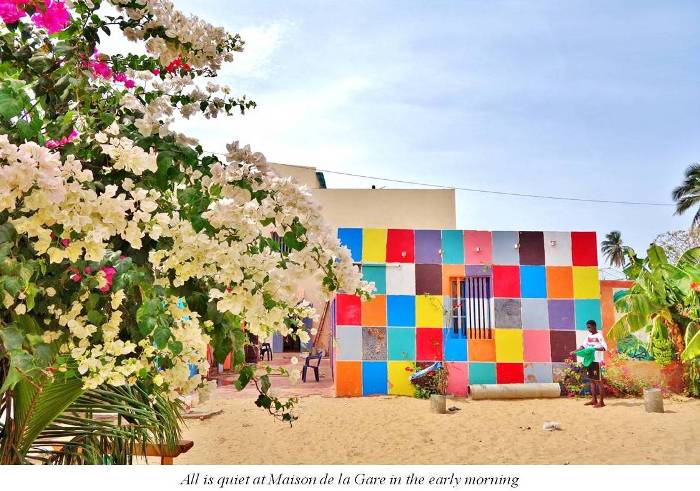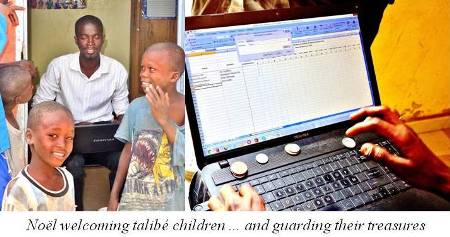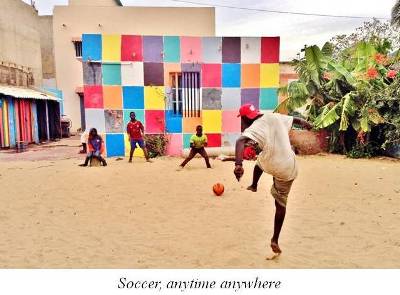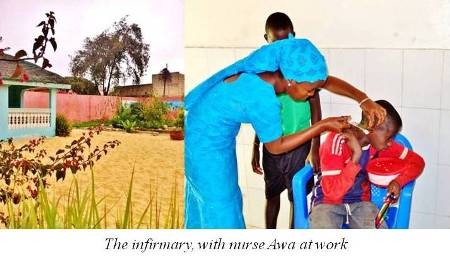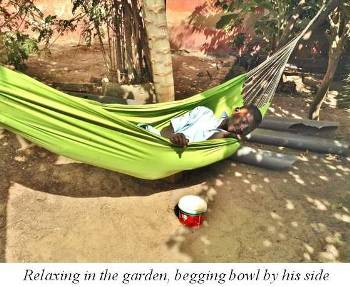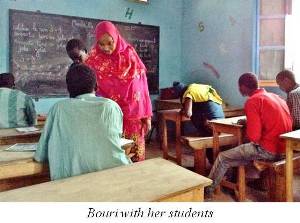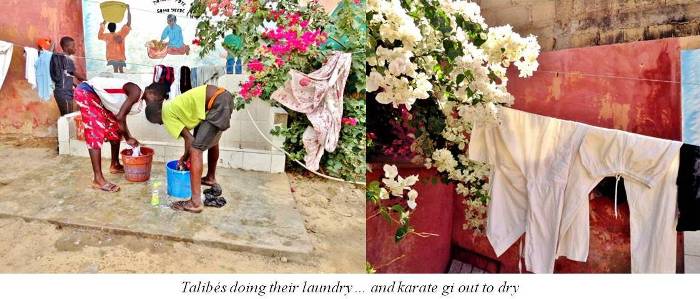
I did not participate in my first Ronde de Nuit until a few years also, In fact, I had been completely unaware of this other side of Issa's life, although I did know that talibes sometimes run from their daaras and marabout's. Now that the Dortoir d'Urgence has been built, twice weekly, late night rounds to search for and rescue runaway talibes are a regular part of the Maison de la Gare mission. We had the opportunity to participate in a night run Monday night.



As hard as Issa Kouyate, President of Maison de la Gare, works by day, for years he has gone out on the streets late at night on weekends or whenever he hears word of the location of a runaway, to search for and rescue runaway talibes. No one pays Issa to do this work. When he found children on the streets at night, he took them back to his own apartment, and settled them in for the night. The next morining he takes the kids to the police station as well as to a children's welfare association to register them. Typically, Issa, representing Maison de la Gare, is given temporary custody until the mater is sorted out. Issa than takes the kids back to his home. He could have 4 to 10 children staying in his living room at any one time. He cares for them, feeds

Issa found this alibe in this condition, a child
them, spends as much time as he can with the often severely traumatized boys. During the day he tries to carry on with his Maison de la Gare duties. Although a children's welfare association does exist, it does not actually offer any services to kids, or have resources to do anything about runaways or kids being abused by marabout's. After a few days a judge will call the child before him, as well as the offending marabout and Issa, a witness. If there are recent scars or obvious signs of abuse, the marabout will often make himself scarce until the evidence heals. Very rarely, in the most severe cases of abuse, marabout's see jail time. Usually, the judge will ask the talibe if he wants to go home or back to the daara. The children often want to go home. Their authorities then give leave to Maison de la Gare to take the kids home, but no resources to enable them to do so. Home can mean a journey of hours, or more likely days. Sometimes it means repatriating a child to another country. Issa spent a lot of time on the road with children who had no one else.
Since the Dortoir d'Urgence was built at the centre the runaways have been staying there for a few days or weeks, under the care of a volunteer "house mother" Mama Diarra. Every now and then a child of severe abuse and no home to go to settles in for a longer stay.

Two Dortoir talibes lounging on the first real beds they have ever slept in.
Gorgui, a delightly bright and enthusiastic young boy with a badly injured arm has been living in the Dortoir since last April when Issa rescued him from an unconscionable situation in his daara. His wounded arm was infected with gangrene, left untreated by the marabout. A grant from the Europen Union has enabled a Maison de la Gare team to be dedicated to finding runaways, work with them, and repatriate them to their homes. Issa's own home is once again his own, most of the time.

We are dreading the day Gorgui may have to return to his daara
Idrissa and a Maison de la Gare employee, Bathie, escorted Rowan, Alicia, Katherine, Karen, Martin and I on a Ronde de Nuit Monday night. We met at the Place Faidherbe at 11pm, armed with flashlights. The streets of Saint Louis are a different place at night. Quiet, not as inviting. Issa estimates there could be as many as 100 runaways on the streets at most times. We were led across the bridge to the Langue de Barbarie. Idrissa spoke with some locals who confirmed they had spotted some runaways in the neighbourhood. We walked among the beached fishing pirogues, scanning the interiors with flashlights, as the surf pounded the shore. Then up and down small alleys and into nooks, looking for life sleeping in a pile of rags or curled up in a dark corner. It was cold this night, so we were unlikely to find kids sleeping out in the open as they sometimes do. We did find three small boys behind a wall, curled up together in a pile of rags. Idy approached them slowly, spoke softly to them in Wolof. After a few minutes we began to move toward a waiting taxi with the boys. Suddenly, one broke and ran, too quick to be caught. The other two got into the waiting car with Bathie and Karen got in on the other side. Back to Maison de la Gare.
While on the run, the children are vulnerable. I have discovered why Issa and Idrissa, a friend working at another association to help talibes, are so driven to do this work in their own "free" time. The children flee for fear of the life in the daaras. But, what waits for them on the street could be even worse. Sexual assault is common against talibe boys on the streets, late at night as society sleeps. No one will be asking about them or care much for their wellbeing, after all. Easy marks. I knew this terrible fact, I had seen the results of such trauma with my own eyes. On our first Ronde de Nuit we found a boy, 6 year old Gora, who had been sexually assaulted on the streets the previous night, the night we had planned to go out but had to postpone. Rowan and I are haunted by thoughts of him still. But this night, Idy warned me of a much greater risk...death. He tells me that children have been disappearing more often than in the past. He thinks because there are more talibes, and thus more runaways, the opportunity for abduction is increasing. (It is estimated there are close to 15,000 talibes in Saint Louis, alone). There is a market, Idy insists, for the blood of children for sorcery in the villages. He admits the boys would have been afraid, rather than comforted as I would have imagined, when Karen got into the taxi, as sorcery is practiced only by women here. It is widely believed that sacrifices were made at the time of the last election, children's remains were found with slit throats. Sacrifice is a rare but horrible offence. A more common one is kidnapping to sell the talibes into slavery in Mauritania, according to Idy. Many others confirm this does happen here, to the most vulnerable talibes that few will miss. Idy says that the nights he is not on a Ronde de Nuit, he cannot sleep as he imagines the dangers lying in wait for the children he will not pick up that night. Issa feels the same way. This is the reason Issa and Idrissa value sleep so little.

Alicia, Rowan and Katherine with the current residents of the Dortoir d'Urgence






















 \
\










